
Smarter email, faster business.
Auto-tag, parse, and respond to RFQs, quotes, orders, and more — instantly.
Enhanced Trent XWB-97 Engine Deployed in the Middle East
February 27, 2025By ePlane AI
0
0
Trent XWB-97
Rolls-Royce
Desert Operations
More news
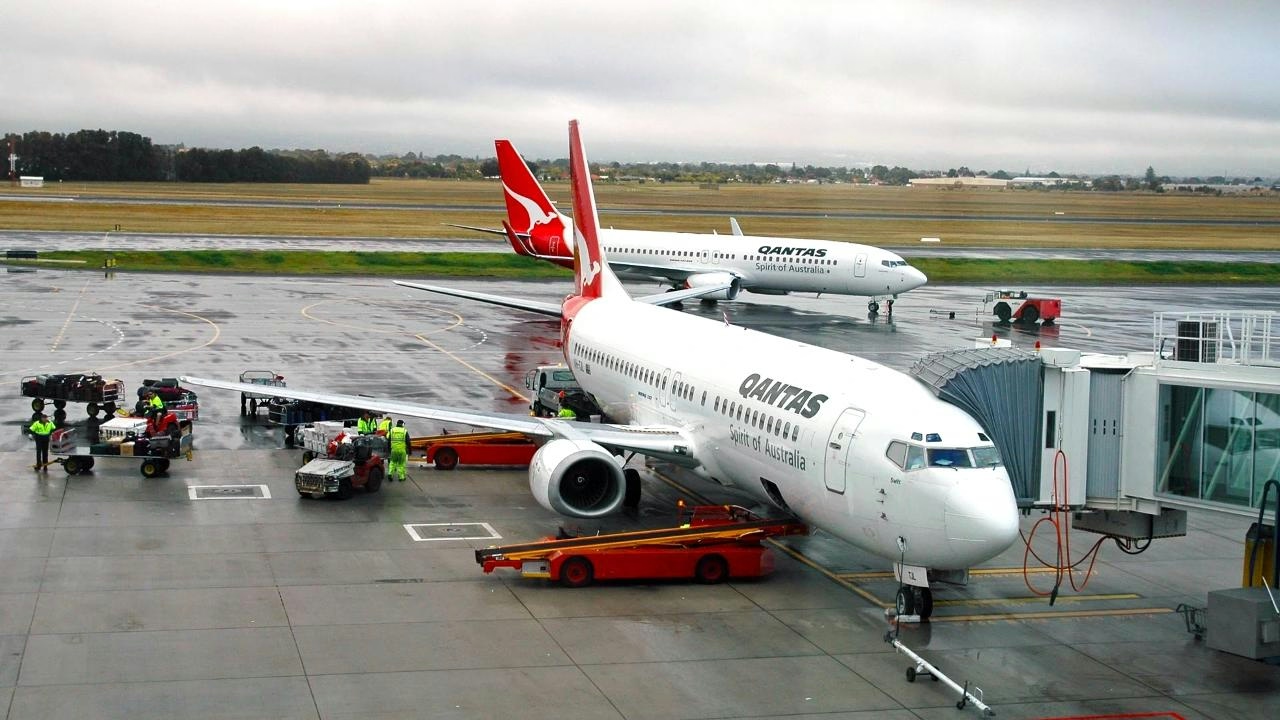
Qantas Leases Boeing 737s Amid Airbus A321XLR Delivery Delays
Qantas Leases Boeing 737s Amid Airbus A321XLR Delivery Delays
Addressing Capacity Challenges with Leased Aircraft
Qantas Airways has announced plans to lease four additional Boeing 737-800 aircraft to strengthen its domestic capacity in response to ongoing delays in the delivery of its new Airbus A321XLR jets. These leased 737s, described as “midlife” aircraft, are expected to enter service by the end of 2025, serving as a temporary solution to the shortfall caused by postponed Airbus deliveries.
The first Airbus A321XLR, initially scheduled for delivery earlier this year at Sydney Airport, is now expected to arrive next week, approximately three months behind the original timeline. This delay is part of a wider industry trend, with Airbus reporting a 4% decline in deliveries in May 2025 amid persistent production and supply chain difficulties. Such setbacks have led some airlines to contemplate legal action against manufacturers, while the market has expressed skepticism regarding interim fleet strategies, including Qantas’ decision to lease older aircraft models.
To maintain operational resilience, Qantas plans to partially upgrade the cabins of the leased Boeing 737-800s upon their entry into service. A comprehensive retrofit, designed to align the interiors with the airline’s next-generation cabin concept intended for the A321XLRs, will be implemented at a later stage.
Fleet Modernization and Cabin Refurbishment
The Airbus A321XLR represents a critical component of Qantas’ fleet modernization strategy, aimed at enhancing service across key hubs such as Melbourne and Brisbane, as well as improving both domestic and short-haul international operations. The delay in its arrival has temporarily disrupted the airline’s transition to a more modern and fuel-efficient fleet.
Concurrently, Qantas is undertaking an extensive cabin refurbishment program for its existing fleet of 42 Boeing 737s. This initiative forms part of a broader effort to elevate the passenger experience, featuring new seats, redesigned sidewalls, updated mood lighting, new carpets, and larger overhead bins capable of accommodating 50% more carry-on luggage. These upgrades are intended to closely mirror the interiors of the incoming Airbus A220 and A321XLR aircraft. The airline will continue to offer fast and free in-flight Wi-Fi on the retrofitted jets. The first fully refurbished 737 is scheduled to return to service in 2027.
The enhanced 737 fleet will continue to operate across Qantas’ domestic network and on short-haul international routes to destinations including Fiji, Vanuatu, and New Zealand. These improvements are designed to ensure service continuity and passenger comfort until the full transition to the new Airbus fleet is complete.
Qantas’ long-term fleet plan envisions replacing its Boeing 737s with Airbus A321XLRs and A220s. As of mid-2025, five Airbus A220s are already in active service, supporting the airline’s operational flexibility and sustainability objectives.
Industry-Wide Implications
The persistent delays in aircraft deliveries reflect broader challenges confronting the aviation industry. Qantas’ approach exemplifies how airlines are adapting to these disruptions by seeking alternative solutions to maintain capacity and service standards. As uncertainty around production timelines continues, other carriers may also explore similar strategies to manage their fleet requirements amid an evolving and complex market environment.
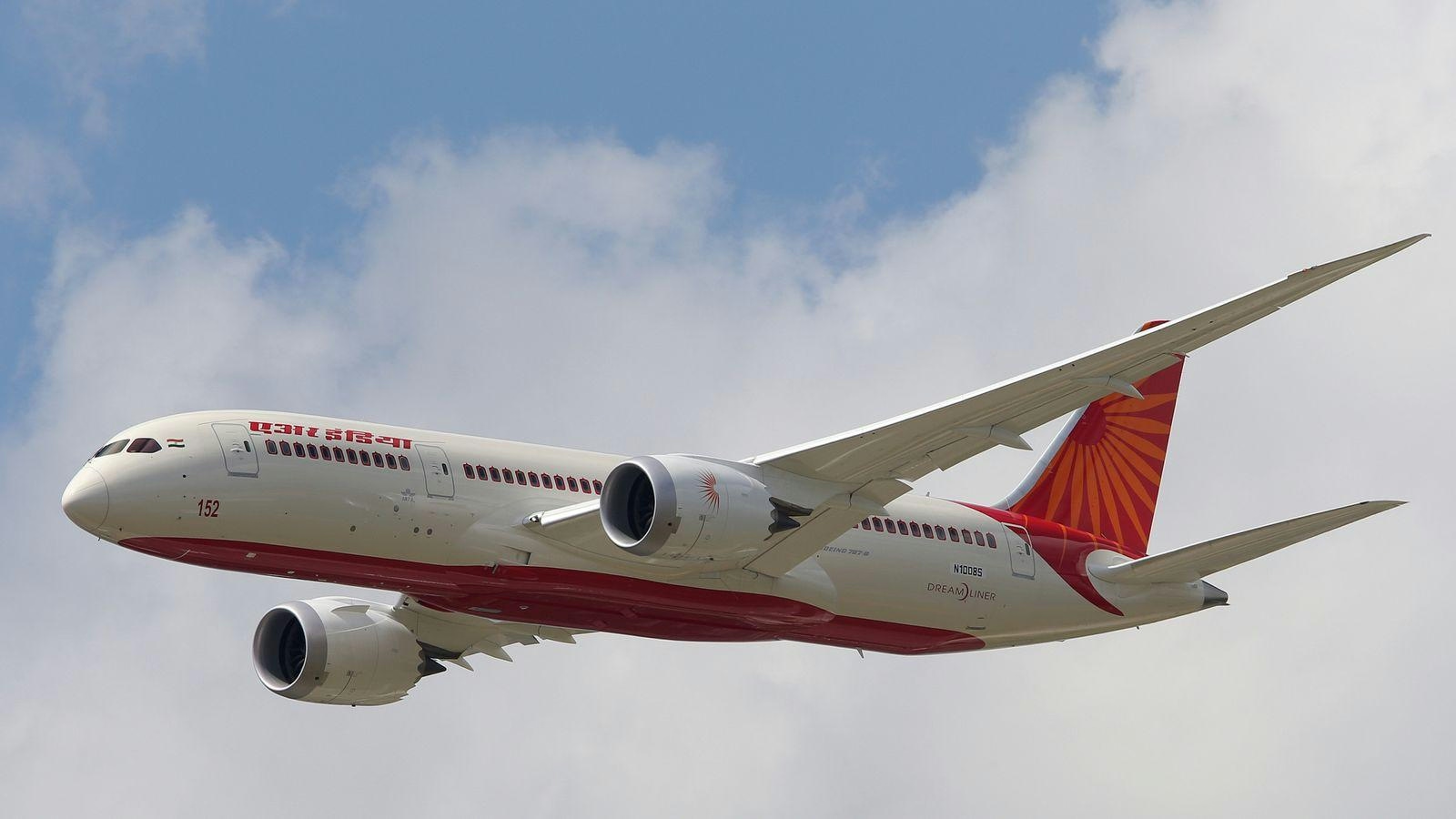
Aviation Expert Suggests Boeing 787 Software May Have Contributed to AI Crash
Aviation Expert Raises Concerns Over Boeing 787 Software in Air India Crash
Mary Schiavo, former Inspector General of the U.S. Department of Transportation and a prominent aviation attorney, has expressed serious concerns that a software-related engine thrust rollback malfunction in the Boeing 787 may have played a role in the recent crash of Air India Flight AI-171. In an exclusive interview with *The Sunday Guardian*, Schiavo highlighted a known issue previously examined by the U.S. National Transportation Safety Board (NTSB), where the aircraft’s computer systems could mistakenly reduce engine thrust during flight.
Drawing on her extensive experience overseeing major air safety investigations and representing families affected by aviation disasters, Schiavo emphasized the risks posed by Boeing’s involvement in its own crash investigations. She called on India’s Directorate General of Civil Aviation (DGCA) to undertake a comprehensive and independent inquiry, particularly given the complexity of the Boeing 787’s software systems.
Software Malfunction and Regulatory Concerns
Central to Schiavo’s warning is the Thrust Control Malfunction Accommodation (TCMA) system, mandated by the Federal Aviation Administration for the Boeing 787. The TCMA operates in conjunction with the Full Authority Digital Engine Control (FADEC) system, relying on computer inputs to determine whether the aircraft is airborne or on the ground. If these systems incorrectly classify the aircraft’s status, they may automatically adjust engine settings, potentially reducing thrust without any pilot intervention.
Schiavo referenced a 2019 incident involving Japan’s All Nippon Airways (ANA), where a similar dual engine thrust rollback occurred. The NTSB investigation into that event identified the issue as a software design flaw and led to corrective measures across the 787 fleet. According to Schiavo, such computer-triggered thrust reductions would leave distinct signatures in the flight data recorder, which investigators should carefully analyze in the case of AI-171.
Wider Implications for Boeing and the Aviation Industry
The possibility that Boeing 787 software contributed to the Air India crash is expected to heighten scrutiny from aviation regulators worldwide. Should software faults be confirmed, both Boeing and Air India could face significant legal consequences. The incident may also prompt a broader reassessment of software-related risks within the 787 fleet. Schiavo drew parallels to Boeing’s handling of the MCAS software issue, which previously sparked global controversy and regulatory intervention.
Beyond regulatory and legal ramifications, the crash carries immediate consequences for the global aviation insurance market. Industry analysts warn that insurance and reinsurance premiums could increase, particularly in India, where the aviation insurance sector has already been grappling with financial losses. Competitors may leverage the situation to highlight their own safety records and technological advancements, potentially affecting Boeing’s market position.
For Air India, the crash presents a critical challenge to its Vihaan.AI transformation program, which aims to elevate the airline to world-class status within five years. The investigation’s outcome and the airline’s subsequent response will be closely monitored by regulators, insurers, and the traveling public.
Flying High: How AIP & Monroe's Aircraft Leasing Venture Captures Post-Pandemic Aviation Recovery
Flying High: How AIP & Monroe’s Aircraft Leasing Venture Captures Post-Pandemic Aviation Recovery
The global aviation industry is witnessing a tangible resurgence following the pandemic-induced downturn. According to the International Air Transport Association (IATA), air travel demand reached 92% of pre-pandemic levels in the first quarter of 2025. Despite this recovery, airlines are grappling with significant capacity challenges, primarily due to delayed aircraft deliveries and aging fleets. This scenario has opened a strategic window for investors to capitalize on the growing demand for aviation leasing.
AIP Capital and Monroe Capital have responded decisively with a $1 billion joint venture aimed at acquiring mid-life aircraft at a critical juncture for the sector. This partnership combines deep industry expertise with substantial financial resources to address the evolving needs of airlines.
Partnership Power: Expertise and Capital Combined
The collaboration between AIP Capital and Monroe Capital leverages the distinct strengths of both firms. AIP Capital, managing $4 billion in aircraft assets, brings extensive sector knowledge and well-established relationships with airlines worldwide. Monroe Capital, a private credit firm with $17 billion in assets under management, provides the financial capacity necessary to scale the venture rapidly. Together, they offer airlines cost-effective alternatives to the high expenses and long lead times associated with new aircraft acquisitions, thereby filling an urgent market gap.
Strategic Focus on Mid-Life Aircraft
Central to the venture’s strategy is the acquisition of mid-life aircraft, typically between five and fifteen years old. These assets present several advantages. Long-term leases, ranging from five to twelve years, with creditworthy airlines ensure predictable and stable cash flows. Additionally, mid-life aircraft maintain strong residual values, avoiding the steep depreciation often seen with new planes. The portfolio emphasizes modern, fuel-efficient models such as the Airbus A320neo and Boeing 737 MAX, aligning with airlines’ increasing focus on reducing operating costs and carbon emissions.
This approach directly addresses two prevailing industry trends: accelerated fleet modernization and the growing dominance of leasing, which now accounts for approximately 60% of the global commercial fleet. Institutional investors are increasingly attracted to aviation leasing as a high-yield, low-volatility asset class, making this venture particularly timely.
Navigating Market Complexities in 2025
Despite promising prospects, the venture faces a complex operating environment. The aviation sector is under mounting pressure to modernize infrastructure and meet rising liquidity demands, especially for leasing new-generation engines. These factors are poised to influence financial dynamics significantly. Competitors are also intensifying their efforts; for instance, Jet Aviation is expanding its hangar facilities in Basel, while Luminair plans to augment its fleet with three Falcon 900LXS aircraft. Concurrently, the expanding commercial fleet is driving demand for advanced communication systems and maintenance services, increasing competition and operational complexity within the market.
Risk Mitigation and Scalable Growth
The financial structure underpinning the AIP-Monroe venture is designed to mitigate risk while enabling scalable growth. A $500 million senior secured warehouse facility, supported by Deutsche Bank and Fifth Third Bank, provides immediate liquidity and flexibility to pursue the $1 billion acquisition target incrementally. The venture aims to build a diversified portfolio of 40 to 60 aircraft, spreading geographic and tenant risk by leasing to both established carriers and emerging market airlines.
Distinctive Attributes of the Venture
The timing of this initiative is particularly advantageous, as airlines urgently require capacity solutions to keep pace with rising passenger demand amid delays in new aircraft deliveries. Valuations in the secondary market for mid-life aircraft remain attractive relative to their operational utility, offering compelling investment opportunities. Furthermore, the warehouse facility structure allows for incremental asset acquisition, reducing exposure to market volatility.
Investment Outlook: A Defensive Position in Aviation’s Recovery
For institutional investors seeking exposure to the aviation sector’s recovery without the inherent volatility of airline equities, this joint venture presents a compelling alternative. The combination of long-term leases, asset-backed collateral, and experienced management serves to reduce operational risks. Aviation leasing continues to demonstrate resilience across varying demand environments, providing sector diversification benefits. Additionally, the focus on modern, fuel-efficient aircraft aligns with environmental, social, and governance (ESG) priorities, supporting airlines’ sustainability objectives.
As the aviation industry adapts to post-pandemic realities and increasing modernization demands, the AIP and Monroe joint venture is strategically positioned to capitalize on emerging opportunities while effectively managing the sector’s evolving challenges.
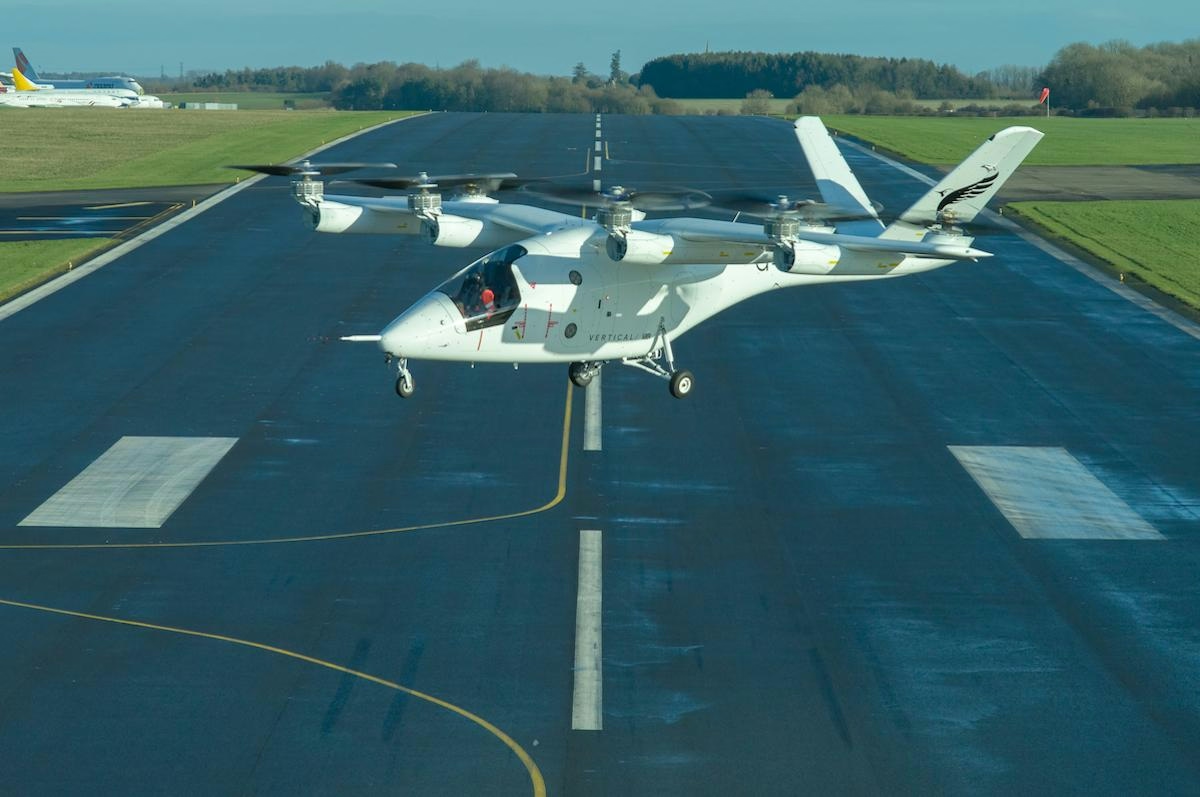
Vertical Aerospace and Bristow Advance the Future of Air Mobility
Vertical Aerospace and Bristow Advance the Future of Air Mobility
Strategic Partnership to Overcome Industry Challenges
In June 2025, Vertical Aerospace (NASDAQ: EVTL) and Bristow Group (NYSE: VTOL) announced an enhanced strategic alliance aimed at accelerating the commercialization of electric vertical take-off and landing (eVTOL) aircraft. This collaboration seeks to tackle two of the most persistent obstacles in advanced air mobility (AAM): the high costs of entry and the operational complexities involved. For investors and industry observers, the partnership represents a significant step toward transitioning eVTOL technology from a speculative concept to practical, widespread deployment.
Central to this alliance is Vertical Aerospace’s VX4 eVTOL, a four-passenger, zero-emission aircraft, which will be integrated with Bristow’s extensive global infrastructure and aviation safety expertise. Together, the companies are introducing a turnkey “ready-to-fly” model that enables customers to lease or purchase aircraft while outsourcing critical services such as maintenance, pilot training, certification, and insurance to the partners. This model, inspired by traditional airline partnerships but adapted for the unique demands of AAM, aims to reduce the capital and regulatory barriers that have historically hindered new market entrants.
This approach allows regional airlines and smaller operators to deploy VX4 aircraft for short-haul passenger services without the need for significant investment in ground crews or maintenance facilities, thereby democratizing access to advanced air mobility.
Leveraging Bristow’s Aviation Expertise and Infrastructure
Bristow brings over 75 years of experience in aviation safety, with a background spanning search and rescue, emergency medical services, and offshore operations. Its global network of Air Operator Certificates (AOCs) and Maintenance, Repair, and Overhaul (MRO) facilities will provide a robust foundation for the operational reliability of the VX4. The integration of Bristow’s safety protocols with Vertical’s cloud-connected aircraft architecture enables real-time data analysis, facilitating predictive maintenance and risk mitigation. This capability is crucial for building confidence among regulators and the public alike.
Market Dynamics and Competitive Pressures
Bristow’s commitment to pre-order up to 50 VX4 units, with options for an additional 50, signals strong confidence in the aircraft’s commercial potential. This builds on Vertical’s existing backlog of over 1,500 pre-orders from major airlines including American Airlines and Japan Airlines. The market response has been positive, with Bristow doubling its pre-orders under a wet-lease agreement, reflecting robust demand.
Nevertheless, the partnership faces significant competition. U.S.-based companies such as Archer and Joby Aviation are emerging as dominant players in Europe’s AAM market, while the collapse of European eVTOL startups like Lilium and Volocopter underscores the sector’s volatility. Vertical’s ongoing financial challenges add further uncertainty, although Bristow’s operational expertise and global reach offer a pathway to mitigate risks and expedite certification processes.
Technical Advancements and Global Expansion
The VX4’s hybrid-electric variant, unique within its class, expands its operational capabilities to include long-range missions such as emergency response and cargo transport. Recent milestones, including the aircraft’s first wingborne flight in European airspace, mark important progress toward regulatory certification. Bristow’s international presence positions Vertical to access emerging markets in Asia and the Middle East, regions where governments are actively investing in AAM infrastructure.
Outlook
The partnership between Vertical Aerospace and Bristow presents a compelling model for scaling advanced air mobility. However, the goal of achieving commercial operations by 2025 remains challenging. The competitive landscape, marked by well-funded U.S. rivals and the financial instability that has affected other European startups, highlights the hurdles ahead. Nonetheless, by combining Vertical’s technological innovation with Bristow’s operational strength, the alliance aims to establish new standards for safe, scalable, and accessible air mobility.
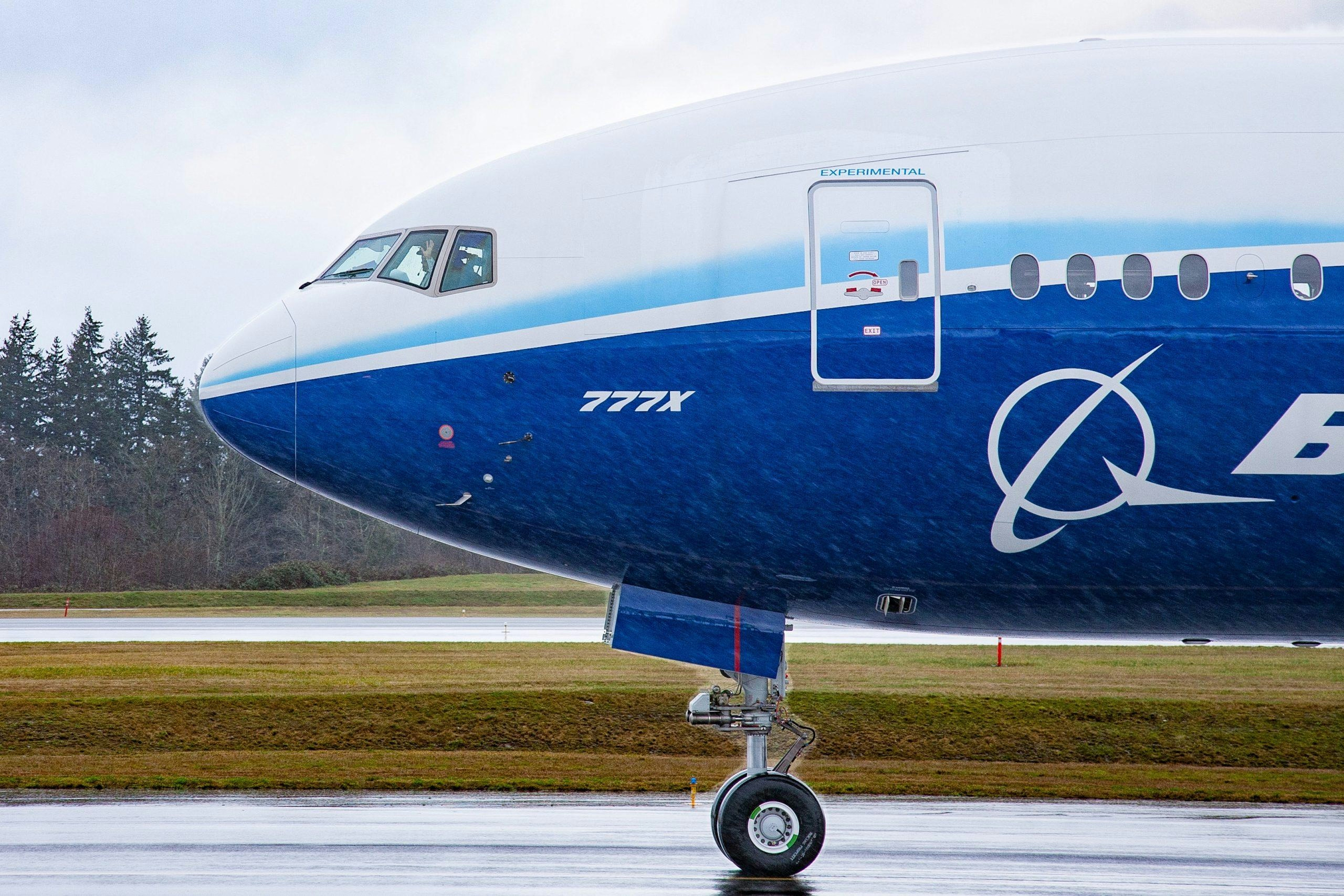
Boeing Confident 777X Deliveries Will Begin Next Year
Boeing Confident 777X Deliveries Will Begin Next Year
Amid a subdued atmosphere at the 2025 Paris Air Show, overshadowed by the recent Air India tragedy, Boeing limited its public engagements. Nevertheless, the company proceeded with a significant presentation on the Boeing 777X program, led by Justin Hale, Customer Leader for 777Xs and Freighters. This event provided a rare update on the long-delayed widebody aircraft, which has encountered numerous setbacks over the past decade.
Confidence in 2026 Entry Into Service
Hale expressed strong confidence that the 777X will enter service in 2026, despite skepticism from some airline customers. He highlighted the daily progress being made within the development program, stating, “I’m very confident that the airplane can enter service in 2026.” The 777X is intended to fill the void left by the retirement of the Boeing 747 and Airbus A380, offering a combination of high capacity and long range. The flagship 777-9 variant will accommodate up to 426 passengers, surpassing the seating capacity of any current-generation aircraft, though it remains below the Airbus A380’s maximum of 586 seats. Its closest competitor, the Airbus A350-1000, seats up to 376 passengers.
Addressing Customer Concerns
Some customers, notably Emirates, have expressed doubts about the delivery timeline, with the airline indicating it does not expect to receive its first 777X until at least 2027. Hale clarified that Emirates is not the launch customer by choice and emphasized Boeing’s ongoing communication with all 777X customers. He noted, “Every two weeks, we have direct phone calls with all of those customers as a group and then we meet individually with them continuously as well.”
Production Ramp-Up and Market Outlook
One of Boeing’s primary challenges will be accelerating 777X production once flight testing and certification are complete. The company faces mounting pressure to fulfill its commitments amid growing market optimism. Emirates, the largest 777X customer, has recently expressed appreciation for improved transparency from Boeing regarding the program’s progress.
Boeing currently holds 551 unfilled orders for the 777X family, which includes the smaller -8, the larger -9, and the 777-8F freighter variants. Lufthansa, rather than Emirates, will serve as the launch customer, with orders for 20 777-9s and seven 777-8Fs. Earlier this year, Boeing confirmed that Lufthansa will receive the first delivery.
Competitive Landscape
The introduction of the 777X coincides with Airbus’s plans to stretch its A350 model to compete more directly with Boeing’s new flagship. Boeing projects robust long-term demand for widebody aircraft, estimating a global need for 43,600 new airliners over the next two decades.
Despite the program’s delays and challenges, Boeing remains optimistic about the 777X’s position in the evolving widebody market. As Hale remarked, the aircraft is “uniquely positioned in a changing widebody landscape,” and the company is committed to meeting its revised delivery target in 2026.
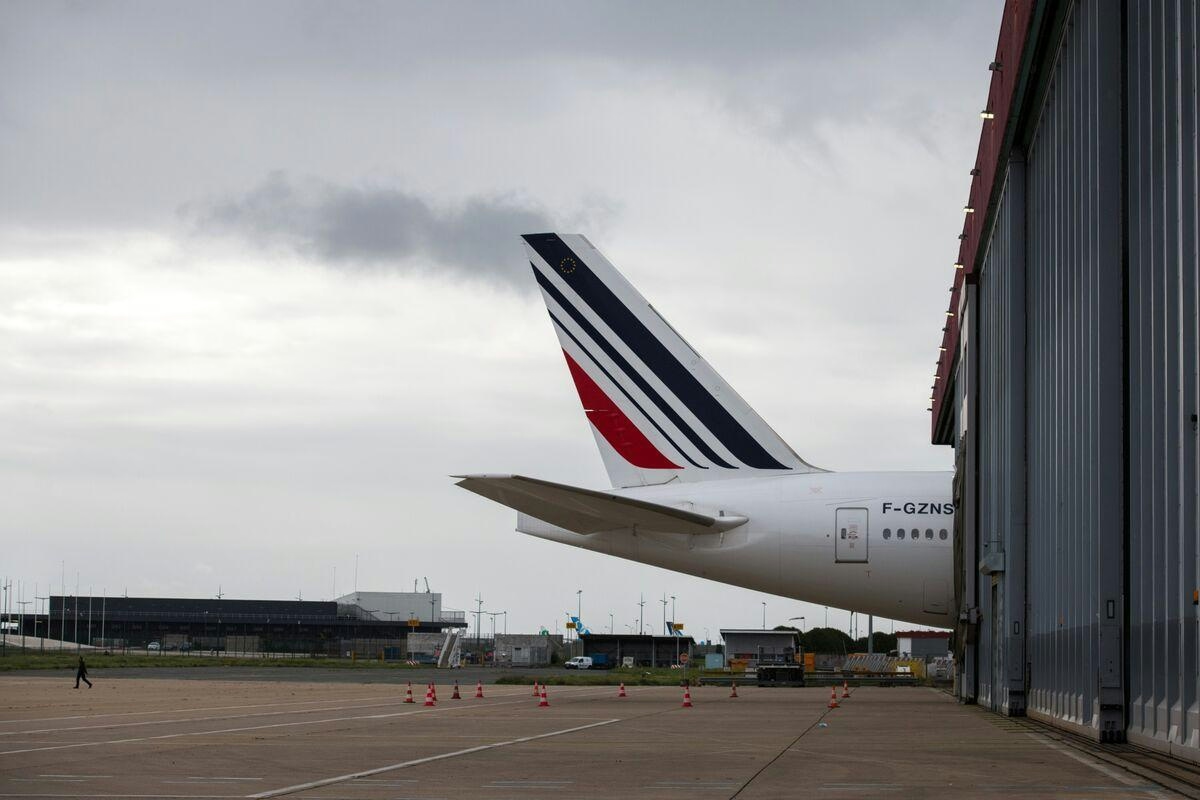
Air France Plans to Hire Over 2,000 Staff in Aviation and Sustainability at Paris Air Show 2025
Air France to Recruit Over 2,000 Employees in Aviation and Sustainability at Paris Air Show 2025
Air France has announced an ambitious plan to hire more than 2,000 new employees across aviation and sustainability sectors, unveiling this major recruitment drive at the 2025 Paris Air Show. This initiative addresses a critical workforce shortage confronting the global aviation industry, as highlighted by analysts from the Aerospace Industries Association and McKinsey, who warn of persistent talent gaps amid rapid sector growth and elevated attrition rates.
At the Paris Air Show, Air France attracted over 5,000 visitors to its booth, providing an immersive experience into the diverse career opportunities within the airline. More than 120 employees from the Air France-KLM Group—including pilots, engineers, and IT specialists—engaged with attendees to discuss career prospects and demonstrate the airline’s latest advancements in digital systems and aircraft maintenance. The company underscored its dedication to cultivating future talent by offering a platform for students, graduates, and seasoned professionals to explore potential career paths.
Strategic Recruitment Amid Industry Challenges
The 2025 recruitment campaign represents one of Air France’s most significant hiring efforts in recent years, reflecting both the airline’s expansion goals and the broader industry’s pressing demand for skilled personnel. The initiative encompasses permanent roles, apprenticeships, and positions across critical areas such as aircraft maintenance, digital technologies and IT systems, flight operations, commercial and customer service, as well as support and administrative functions.
Air France is placing particular emphasis on diversity and gender equality, actively seeking candidates from varied backgrounds. This inclusive approach aims to meet the evolving requirements of an aviation sector undergoing profound digital transformation while facing intensified competition for talent.
Industry-Wide Implications and Competitive Pressures
Air France’s recruitment plans arrive at a pivotal juncture for the aviation industry. Boeing’s latest 20-year Commercial Market Outlook projects a global demand for approximately 43,600 new airliners, underscoring the scale of workforce expansion required. As airlines worldwide accelerate hiring to satisfy this demand, competition for qualified workers is expected to intensify, potentially driving upward pressure on salaries and benefits.
Rivals such as Airbus and Embraer are anticipated to adopt comparable recruitment strategies, further intensifying the competition for skilled professionals. This evolving dynamic is reshaping the labor market, making talent acquisition and retention critical priorities for airlines striving to maintain operational excellence and foster ongoing innovation.
Partnerships to Shape the Future Workforce
In addition to its recruitment efforts, Air France is investing in the future of aviation through strategic partnerships with leading educational institutions. These collaborations focus on developing specialized training programs designed to cultivate the next generation of aviation professionals, ensuring a sustainable talent pipeline equipped to address the industry’s changing demands.
As the aviation sector recovers from the pandemic and embraces emerging technologies, Air France’s comprehensive recruitment and workforce development initiatives position the airline at the forefront of industry transformation, highlighting both the opportunities and challenges that lie ahead.
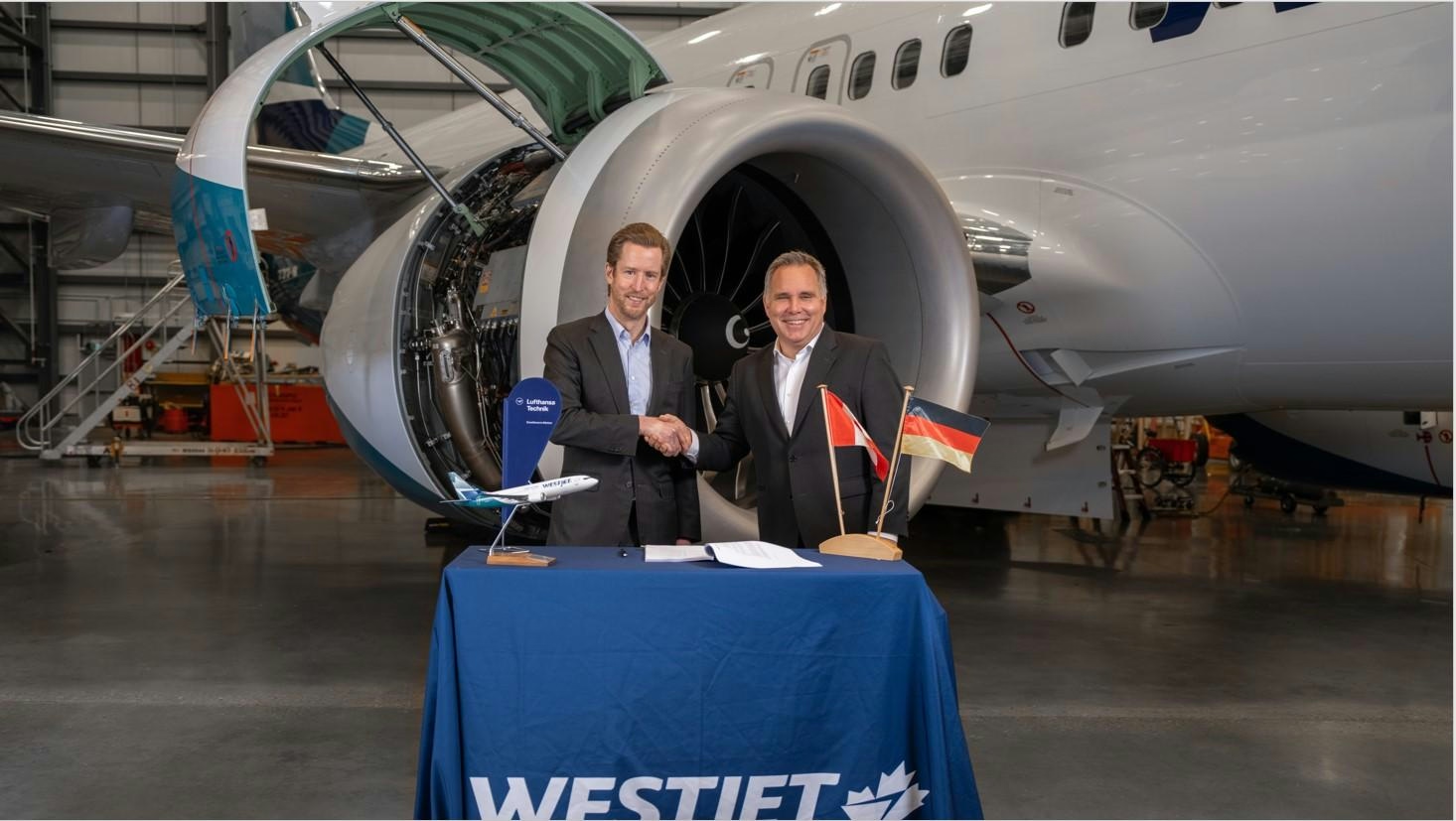
Calgary launches YYC AeroNex to drive aviation innovation
Calgary Launches YYC AeroNex to Drive Aviation Innovation
The Calgary Airport Authority has unveiled YYC AeroNex, a new aviation innovation hub designed to establish Calgary as a key player in the global air transport industry. This initiative aims to address persistent technology and infrastructure gaps within Canada’s aviation sector by focusing on advanced maintenance capabilities, sustainable fuel development, and workforce training. YYC AeroNex is poised to transform the operational landscape for Canadian airlines, enhancing their competitiveness on the international stage.
Advancing Maintenance and Sustainable Aviation
At the heart of YYC AeroNex is a C$120 million (US$87.5 million) Maintenance, Repair, and Overhaul (MRO) facility, developed in partnership with Lufthansa Technik. This facility will feature Canada’s only engine test cell of its kind and will dedicate space to the development of sustainable aviation fuels (SAF). Rob Bachart, Chief Real Estate Officer at the Calgary Airport Authority, highlighted the significance of this infrastructure, noting that Canadian airlines currently must send aircraft or engines abroad for maintenance, a process that increases costs, turnaround times, and emissions. The new facility aims to reduce these inefficiencies, thereby lowering operating costs and emissions while improving service speed.
The project is supported by C$172 million in financing from the Canada Infrastructure Bank, complemented by commercial lenders. Bachart emphasized that the decision by Lufthansa Technik to establish operations in Calgary was influenced by the city’s strong innovation ecosystem, access to skilled labor, and expanding cargo and passenger traffic. These factors position Calgary as an attractive hub for long-term operational growth and talent development in the aviation sector.
Addressing Industry Challenges and Fostering Collaboration
Despite its promising outlook, YYC AeroNex faces challenges common to the aviation industry, including the recruitment and retention of skilled workers and the need to build partnerships with established aviation service providers. As demand for air travel and aircraft maintenance grows, the hub’s success will depend on its ability to overcome workforce shortages and infrastructure limitations.
In addition to its maintenance and fuel initiatives, YYC AeroNex will collaborate with post-secondary institutions to develop specialized educational programs. These programs aim to cultivate long-term careers in maintenance, engineering, and emerging technologies such as sustainable fuels, thereby strengthening the talent pipeline for the aviation industry.
All four initial projects under YYC AeroNex are expected to be operational by 2029. The Calgary Airport Authority plans to measure the hub’s impact on the national aviation ecosystem through ongoing partnerships with government, industry, and academic stakeholders. Bachart underscored that YYC AeroNex represents more than just infrastructure development; it is a strategic effort to build a future-focused ecosystem that fosters innovation, attracts investment, and secures Canada’s position in the evolving global aviation landscape.
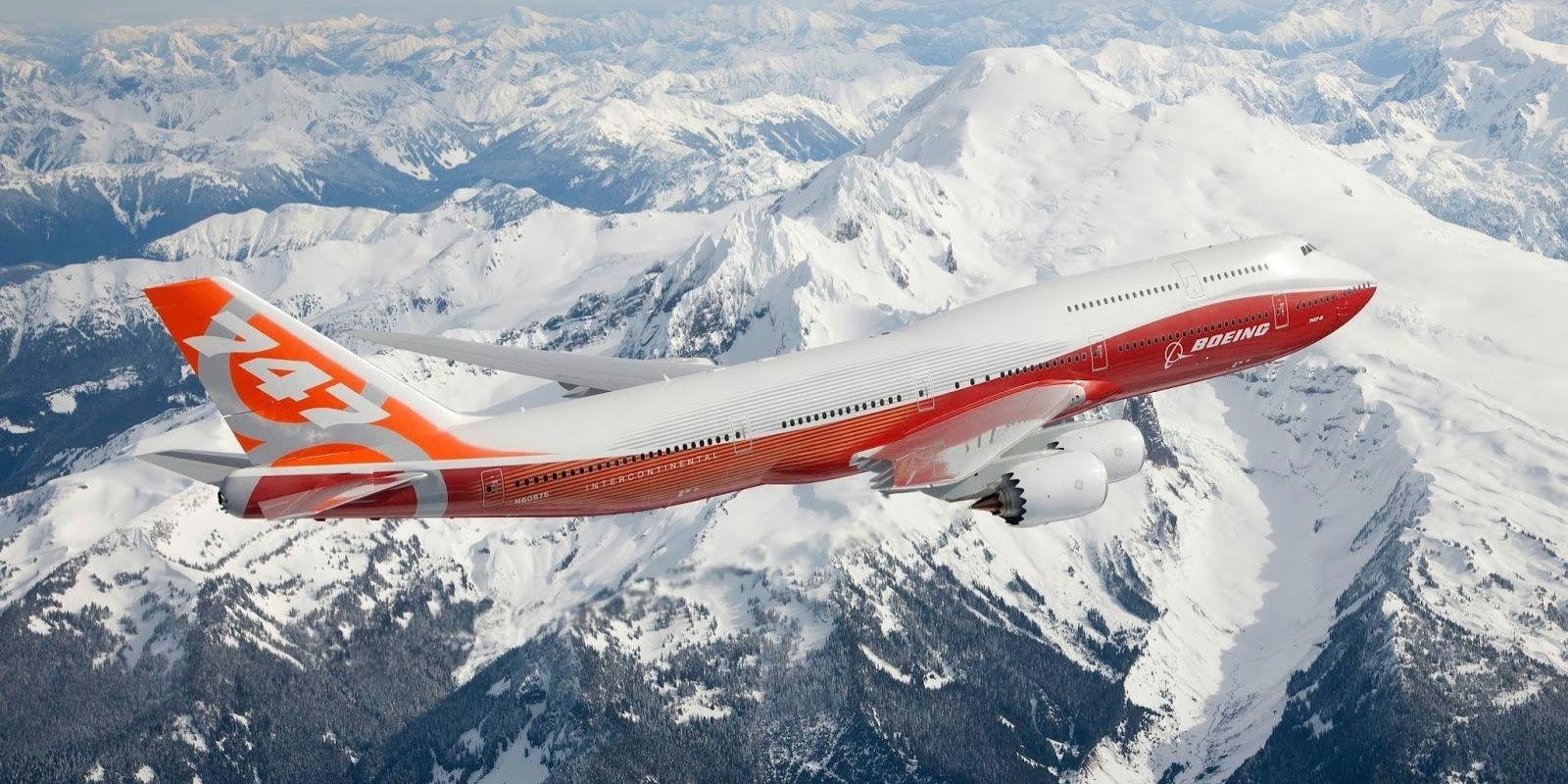
Why US Airlines Did Not Order the Boeing 747-8
Why US Airlines Did Not Order the Boeing 747-8
The Boeing 747 has long been an emblem of American aviation, celebrated as a flagship aircraft for major US carriers and a symbol of luxury air travel. Despite this illustrious history, the final iteration—the Boeing 747-8—never secured orders from any US passenger airline. Of the 155 747-8s produced between 2008 and 2023, the overwhelming majority were deployed as cargo freighters, with only a limited number of passenger variants sold exclusively to foreign carriers.
Economic and Industry Shifts
This absence is particularly notable given the 747’s historic prominence in the US market. When the original 747 was introduced, it was eagerly embraced by American airlines for their most prestigious and high-capacity routes. However, by the time the 747-8 entered production, the aviation industry had undergone significant transformation. The primary factor behind the lack of domestic passenger orders was economic. Newer twin-engine aircraft such as the Boeing 777 offered airlines enhanced fuel efficiency, greater operational flexibility, and improved profitability. The 747-8, with its four engines and larger size, could not match the cost advantages of these modern twinjets, making it less attractive to US carriers focused on optimizing their fleets.
Beyond pure economics, broader political and industry dynamics also influenced the 747-8’s reception. During the aircraft’s production period, the Trump administration imposed tariffs on imported aircraft and components, creating uncertainty for US airlines contemplating new purchases. Delta Air Lines publicly warned that these tariffs threatened to disrupt not only Airbus acquisitions but also future aircraft procurement more generally. Boeing itself faced retaliatory tariffs from other countries, complicating international aerospace transactions. Additionally, the administration’s scrutiny of the Qatari 747-8 as a potential Air Force One replacement underscored the complex political environment surrounding the aircraft. High-profile incidents, including the Air India accident involving a 747-8 and skepticism expressed by Airbus’ CEO regarding order prospects at the Paris Air Show, further contributed to a cautious atmosphere among US airlines.
The Legacy of the Jumbo Jet in the US
The decline of the 747 in the US passenger market is also intertwined with the fate of Pan Am, the original launch customer and most iconic operator of the jumbo jet. Pan Am’s identity was closely tied to the “Queen of the Skies,” but the airline struggled to navigate the challenges of deregulation and financial strain. It ultimately declared bankruptcy in 1991, citing factors such as rising fuel costs during the Persian Gulf crisis, the tragic terrorist bombing of Flight 103, and mounting legal and regulatory burdens. Many analysts argue that Pan Am’s reluctance to transition away from the jumbo jet and modernize its fleet contributed to its downfall.
Today, only a small number of 747-8 Intercontinental (747-8I) passenger aircraft remain in service, primarily with international airlines. The “I” designation reflects the aircraft’s design for long-haul intercontinental routes. In the United States, however, the era of the jumbo jet has effectively ended, supplanted by more efficient and versatile aircraft like the Boeing 777X. While the 747-8’s legacy endures as a milestone in aviation history, its absence from American passenger fleets highlights the evolving priorities and economic realities shaping the modern airline industry.
BigBear.ai's AI Security Solutions Support Aviation Recovery
BigBear.ai’s AI Security Solutions Support Aviation Recovery Amid Evolving Threats
As the global aviation industry recovers from the disruptions caused by the COVID-19 pandemic, it confronts a dual challenge: managing a surge in passenger volumes while countering increasingly sophisticated security threats. BigBear.ai (NYSE: BBAI) is positioning itself at the forefront of this evolving landscape. The company’s recent collaboration with Analogic to integrate its AI-driven threat detection technology into CT scanners represents a pivotal advancement in aviation security, enabling BigBear.ai to capitalize on the expanding $20 billion global market.
Strategic Integration of AI and Hardware
BigBear.ai’s Pangiam® Threat Detection platform has been embedded into Analogic’s ConneCT™ CT scanners, marking a significant innovation in airport security protocols. By utilizing artificial intelligence to analyze CT scan data in real time, the system enhances threat identification accuracy while reducing false positives—an essential improvement for airports aiming to expedite passenger processing. The platform’s open-architecture design offers airports the flexibility to integrate diverse hardware and software components, safeguarding their investments against rapid technological obsolescence. CEO Kevin McAleenan emphasizes that this adaptability allows airports to “respond to emerging threats without overhauling their entire infrastructure.”
Nonetheless, the dynamic nature of AI security introduces new vulnerabilities. Emerging risks such as agentic AI exploits, data poisoning, and model deserialization highlight the necessity for a secure-by-design framework. BigBear.ai is committed to continuously evolving its solutions by incorporating specialized AI security measures to counter both conventional and novel threats effectively.
Financial Performance and Market Momentum
BigBear.ai’s financial results for the first quarter of 2025 underscore its growing influence in the aviation security sector. The company reported a 5% year-over-year revenue increase, reaching $34.8 million, driven by contracts with the Department of Homeland Security and initiatives in digital identity verification. Its backlog expanded by 15% compared to 2024, totaling $385 million, reflecting strong demand for its biometric and AI-powered systems deployed at U.S. ports of entry.
Despite narrowing its net loss to $62 million from $127.8 million in the previous year’s quarter, the company continues to operate at a loss. Management remains optimistic, reaffirming full-year revenue guidance between $160 million and $180 million and projecting losses in the single-digit millions. The stock has declined approximately 30% year-to-date, reflecting investor caution over sustained losses, yet this downturn may present an entry point ahead of anticipated margin improvements.
Drivers of Growth in Aviation Security
The sector’s expansion is propelled by two primary trends. First, airports are modernizing legacy screening systems by adopting AI-enhanced technologies. Analogic’s extensive installed base of over 3,000 CT scanners provides a substantial market for BigBear.ai’s software solutions. Second, governments are increasingly mandating biometric systems that link traveler identities to threat databases, an area where BigBear.ai’s AI capabilities are particularly effective.
Automation of threat detection not only enhances accuracy but also reduces the need for manual staffing. Industry estimates suggest that CT scanners equipped with Pangiam technology can process approximately 20% more passengers daily compared to traditional systems, thereby improving operational efficiency.
Challenges and Competitive Environment
BigBear.ai faces several challenges in its pursuit of market leadership. Delays in government funding have contributed to excess capacity costs, while Analogic’s CT scanners compete against established industry players such as Smiths Detection and Thales. The broader AI security market is intensely competitive, with significant investments from major technology firms potentially exerting downward pressure on prices and profit margins. Competitors are also likely to adopt similar AI-driven security solutions to maintain their market share.
Additionally, declining public trust in AI—fueled by concerns over security vulnerabilities—poses a significant national security risk. Developing robust and trustworthy AI systems is critical not only for operational success but also for sustaining public confidence in these technologies.
Investment Perspective
Trading at $2.80 per share, BigBear.ai’s stock is valued at approximately 7.5 times the midpoint of its 2025 revenue guidance, representing a discount relative to peers such as Palantir Technologies (PLTR). Analysts’ consensus target price of $4.00 implies a potential upside of 43%, contingent on the company’s ability to improve profit margins. While the investment remains speculative, BigBear.ai’s strategic focus on secure, adaptable AI solutions positions it as a noteworthy contender in the rapidly evolving aviation security market.
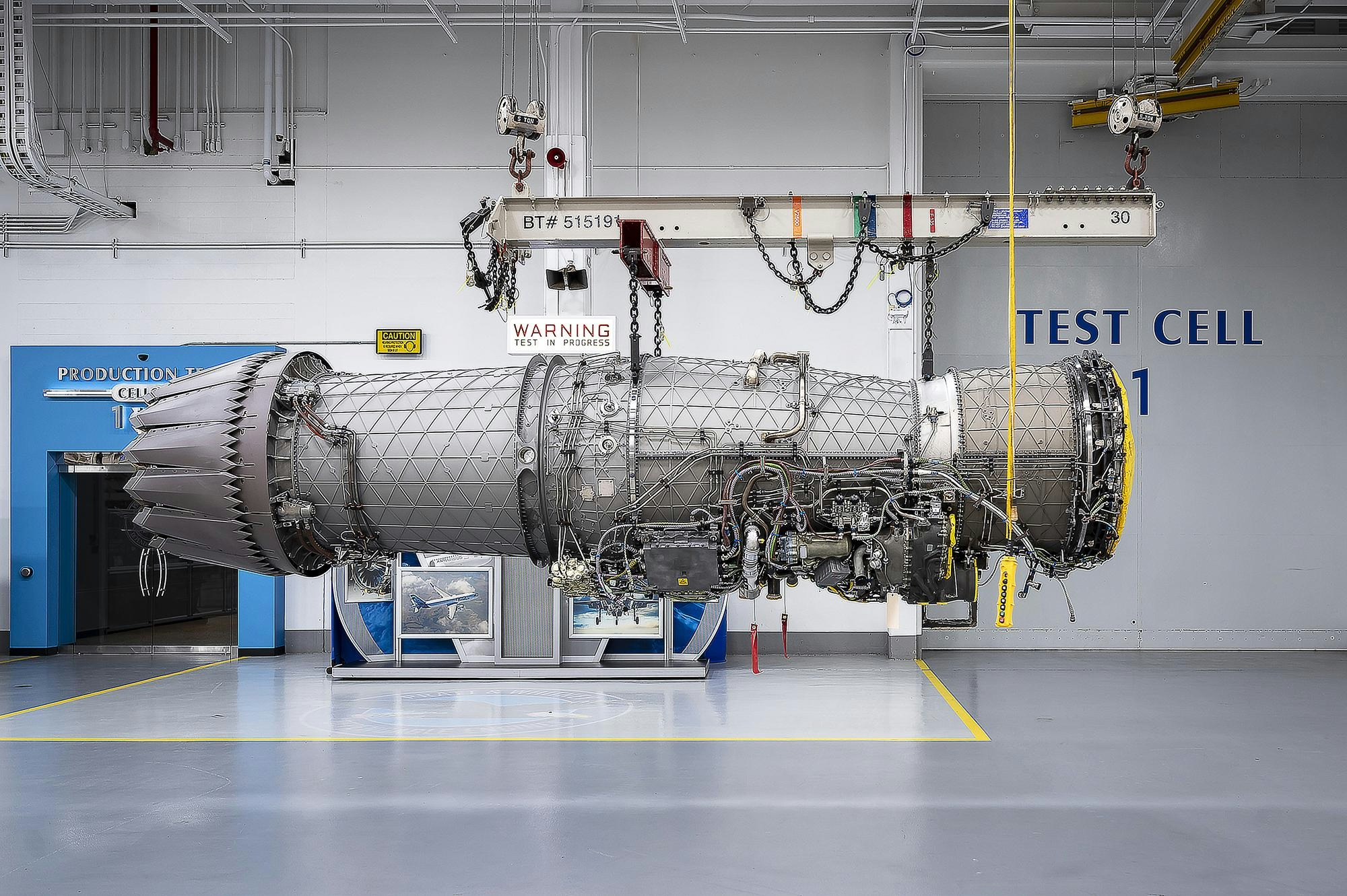
Startup Tests Advanced Jet Engine Prototype
Startup SiriNor Advances Emission-Free Jet Engine Technology
Groundbreaking Prototype Achieves Key Milestone
SiriNor, a startup operating out of India and Norway, has successfully completed ground testing of its pioneering emission-free electric jet engine prototype. The test, conducted in Pune, India, marked a significant achievement as the engine reached Technology Readiness Level 6 (TRL6) under NASA’s evaluation framework. This milestone signals the engine’s readiness for demonstration in relevant environments, underscoring the potential for transformative impact on the future of aviation.
During the controlled laboratory tests, the engine exceeded its design expectations by achieving rotational speeds surpassing 40,000 revolutions per minute and generating a thrust of 10 kilogram-force. These results validate the engine’s scalability and adaptability, highlighting its promise for various aerospace applications. By eliminating combustion processes, SiriNor’s design offers a 30% reduction in manufacturing costs and decreases maintenance requirements by up to 40%, factors that could lead to more affordable air travel and reduced shipping expenses.
Environmental and Industry Implications
The environmental advantages of SiriNor’s electric jet engine are considerable. Aviation was responsible for approximately 2.4% of global carbon dioxide emissions in 2018, according to data from the Environmental and Energy Study Institute. Transitioning to electric propulsion systems like SiriNor’s could substantially lower these emissions, contributing to cleaner air and mitigating the aviation sector’s environmental footprint. The company’s approach draws parallels to the impact electric vehicles have had in reducing pollution and maintenance costs in ground transportation.
Despite these promising developments, SiriNor faces significant challenges as it advances toward commercialization. Securing adequate funding, navigating stringent regulatory landscapes, and managing inherent technological risks remain critical obstacles. Investor caution is expected given the high capital requirements and uncertainties associated with novel engine technologies. Additionally, established aerospace manufacturers are likely to intensify their research and development efforts, form strategic alliances, or pursue acquisitions to maintain competitive advantage. The recent expansion of Kratos Defense’s advanced manufacturing capabilities for GEK turbojet engines in Oklahoma exemplifies the dynamic and competitive nature of the sector.
Future Prospects and Industry Outlook
SiriNor has outlined an ambitious roadmap, aiming to commercialize its engines for unmanned aerial vehicles by mid-2026, obtain seaplane certification by 2027, and target regional aircraft markets by 2030. The company envisions eventual adoption of its technology in commercial passenger aircraft, positioning itself at the forefront of sustainable aviation innovation.
Abhijeet Inamdar, co-founder and CEO of SiriNor India, emphasized the company’s commitment to sustainability and adaptability, stating, “This is about shaping the next era of aviation — and we’re proud to be building it from India.” Early investor Alok B Shriram, senior managing director and CEO of DCM Shriram Industries, highlighted the significance of the achievement as “serious, homegrown technology built in India” and expressed confidence in its role as the future of aviation.
As the aerospace industry continues to evolve amid technological advancements and increasing environmental pressures, SiriNor’s progress will be closely monitored as a potential catalyst for cleaner, more efficient air travel on a global scale.
Ask AeroGenie